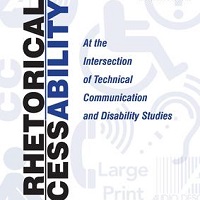Let’s try a thought-experiment. We’re in a park. Three people are playing soccer. One of them, 20, yells “You kick like an 8 year old!” at the other two – but it’s not clear which one. The 4-year old beamsContinue reading… Do not use “reading age” when thinking about adults
Category: design to read
Use your plain language skills to improve your survey
Plain language skills are vital for surveys. If people can easily understand your questions, then that will help them to give accurate answers. And plain language specialists are constantly thinking about their audience and its needs – which is vitalContinue reading… Use your plain language skills to improve your survey
Don’t be afraid of the big long page
This post is co-authored by me and Amy Hupe. Long pages of content can seem daunting, so to make them look shorter, designers and developers often reach for things that hide some of the content, such as accordions, tabs, carouselsContinue reading… Don’t be afraid of the big long page
Sentence case or title case in forms?
Is it better to use sentence case or title case in forms? If you think “surely there are more important forms questions than that one” then you are right. Never once, in all my many years of watching people fillContinue reading… Sentence case or title case in forms?
What does low literacy mean in practice?
Hi! You’re reading this, correct? What about someone who has low literacy? What does that actually mean for them? Low literacy means ‘not good at reading’ There’s a lot of low literacy about. One major investigation in the UK discoveredContinue reading… What does low literacy mean in practice?
Readability Formulas: seven reasons to avoid them and what to do instead
I had the honour of working with Ginny Redish on this article on readability formulas. Ginny is a leading authority on writing, accessibility, and content design and usability. I’ve lost count of the number of copies of her excellent book,Continue reading… Readability Formulas: seven reasons to avoid them and what to do instead
Rhetorical accessibility: at the intersection of technical communication and disability studies
This collection, edited by Lisa Meloncon and just published by Routledge, includes a chapter bringing a more academic spin to the earlier article on designing for accessibility co-authored with Janice (Ginny) Redish, Kathryn Summers and Kath Straub. That article, DesignContinue reading… Rhetorical accessibility: at the intersection of technical communication and disability studies
Design to Read: resources
This post is intended as a round-up of web and other resources that may be helpful when you are designing for people who do not read easily. It was first published on a dedicated Design to Read website. Publications byContinue reading… Design to Read: resources
Design to read: guidelines for people who do not read easily
These guidelines are co-authored by Janice (Ginny) Redish, Kathryn Summers, and Caroline Jarrett. Orignally published in the June 2010 issue of UXPA User Experience, our work orginated in the ‘Design to Read’ project. Design to read project archive This articleContinue reading… Design to read: guidelines for people who do not read easily
Embedded links and online reading accessibility
At the 2010 Society for Technical Communication conference in Dallas, Whitney Quesenbery and I were interviewed about the feasibility of removing links embedded directly within paragraphs. These have been described as “exit points” that confuse and disorient low-literacy readers. The interview wasContinue reading… Embedded links and online reading accessibility










